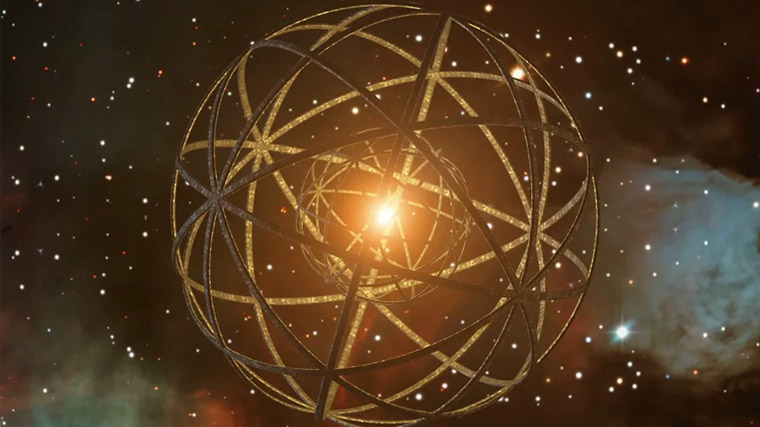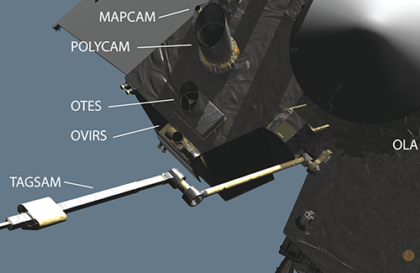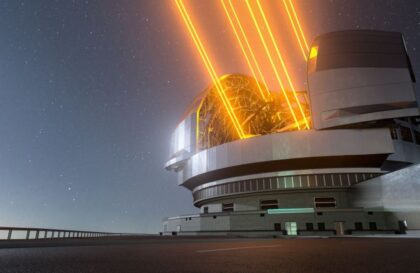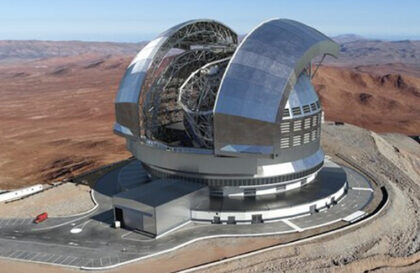Even a one-second error on a watch could mean the difference between landing on Mars and missing it by hundreds of thousands of miles. For space exploration, atomic clocks must be extremely accurate.
Navigation of spacecraft today depends on commands from Earth transmitted through a relay system with communication delays. This ties them to Earth and poses problems for long-distance crewed space missions, including precision landings on other planets. The average distance from the Earth to the Moon is about 384 thousand km. The signal travels this distance in approximately 1.3 seconds in one direction. The delay time of the signal to Mars ranges from 3 minutes 6 seconds to 22 minutes 17 seconds and depends on Earth’s relative position and Mars’s.
This limitation poses obvious problems for a future crewed mission to another planet. How can astronauts travel far from Earth without direct control over where they go?
NASA has a solution
Credit: General Atomics Electromagnetic Systems
NASA is developing a toaster-sized atomic clock to improve space navigation. These clocks will allow spacecraft to determine their location without terrestrial assistance. Using a SpaceX Falcon Heavy rocket, the technology will be tested for a year in Earth orbit. The success of the tests could lead to the development of an astronaut navigation system similar to GPS for missions to the Moon, Mars, and beyond, making autonomous navigation in deep space possible.
There is no GPS in deep space
Atomic clocks are now used in GPS satellites to determine locations on Earth. The signal from them is directed to the Earth. However, spacecraft cannot use GPS in deep space and rely on signals from Earth from giant antennas. Signal time delay can lead to significant position errors. Navigators measure the travel time of a signal from antennas on Earth to the spacecraft and back to determine the ship’s distance and speed for course control.
This is the same concept as echo. The longer the echo returns to the source of the sound, the further away the mountain is.
Two-way navigation in space missions requires waiting while transmitting signals over long distances. In the case of the Curiosity rover, the landing message came 14 minutes after landing. During this time, the spacecraft can change its position significantly due to its high flight speed.
The best way to navigate
Miniature but accurate atomic clocks could allow spacecraft to determine their location and trajectory independently, reducing dependence on signals from Earth. This will improve radio navigation and, combined with optical navigation, provide astronauts with a more reliable and safer method of navigating themselves in space.
Physicists Bert, Tjoelker, and Prestage of the Jet Propulsion Laboratory Prestage created a mercury-ion atomic clock for space, 50 times more accurate than GPS clocks, with an error of 1 second over 10 million years. Tests in space will show the clock’s stability in orbit, which could allow its use in missions in the 2030s, including unmanned and manned flights. The project is sponsored by NASA and managed by JPL, with the spacecraft from General Atomics ElectroMagnetic Systems of Englewood, Colorado.
5 Things You Need to Know About NASA’s Deep Space Atomic Clock
It’s very similar to GPS
The Deep Space Atomic Clock is the first clock on the clock of a spacecraft that leaves Earth’s orbit. They will enable autonomous navigation of spacecraft in deep space, improving a process that currently depends on signals sent by antennas on Earth. These new clocks allow spacecraft to independently determine their position and route without waiting for two-way communications with Earth.
The spacecraft navigates independently
Technicians integrate NASA’s Deep Space Atomic Clock into the Orbital Test Bed Earth-orbiting satellite, which will launch on a SpaceX Falcon Heavy rocket in late June. Credit: General Atomics
Modern deep space navigation requires sending signals from Earth through antennas and back to determine the spacecraft’s location. Atomic clocks for deep space will allow ships to determine their position independently without relying on signals from Earth.
Clocks lose only 1 second every 10 million years
Atomic clocks for space navigation must be extremely accurate because even a second’s error can significantly affect the location. Recent tests have shown that deep-space atomic clocks are 50 times more accurate than GPS clocks. Successful space tests will confirm it as one of the most accurate watches.
Watches use mercury ions
Wrist and atomic clocks keep time by measuring vibrations. Wristwatches measure quartz vibrations; atomic watches measure atomic vibrations. The accuracy of wristwatches is affected by external conditions and loses seconds or minutes over time. Atomic clocks determine the second through the frequency of light emitted by atoms, ensuring equal accuracy throughout the cosmos. Atomic clocks for deep space use mercury ions in electromagnetic traps, which reduces sensitivity to external conditions.
Watch launched on SpaceX Falcon Heavy rocket
The deep space atomic clock flies on the Orbital Test Bed satellite, which launched on a SpaceX Falcon Heavy rocket on June 22, 2019.
Banner image: General Atomics Electromagnetic Systems
Image credit:
https://www.jpl.nasa.gov
https://www.nasa.gov
https://www.nasa.gov/missions






